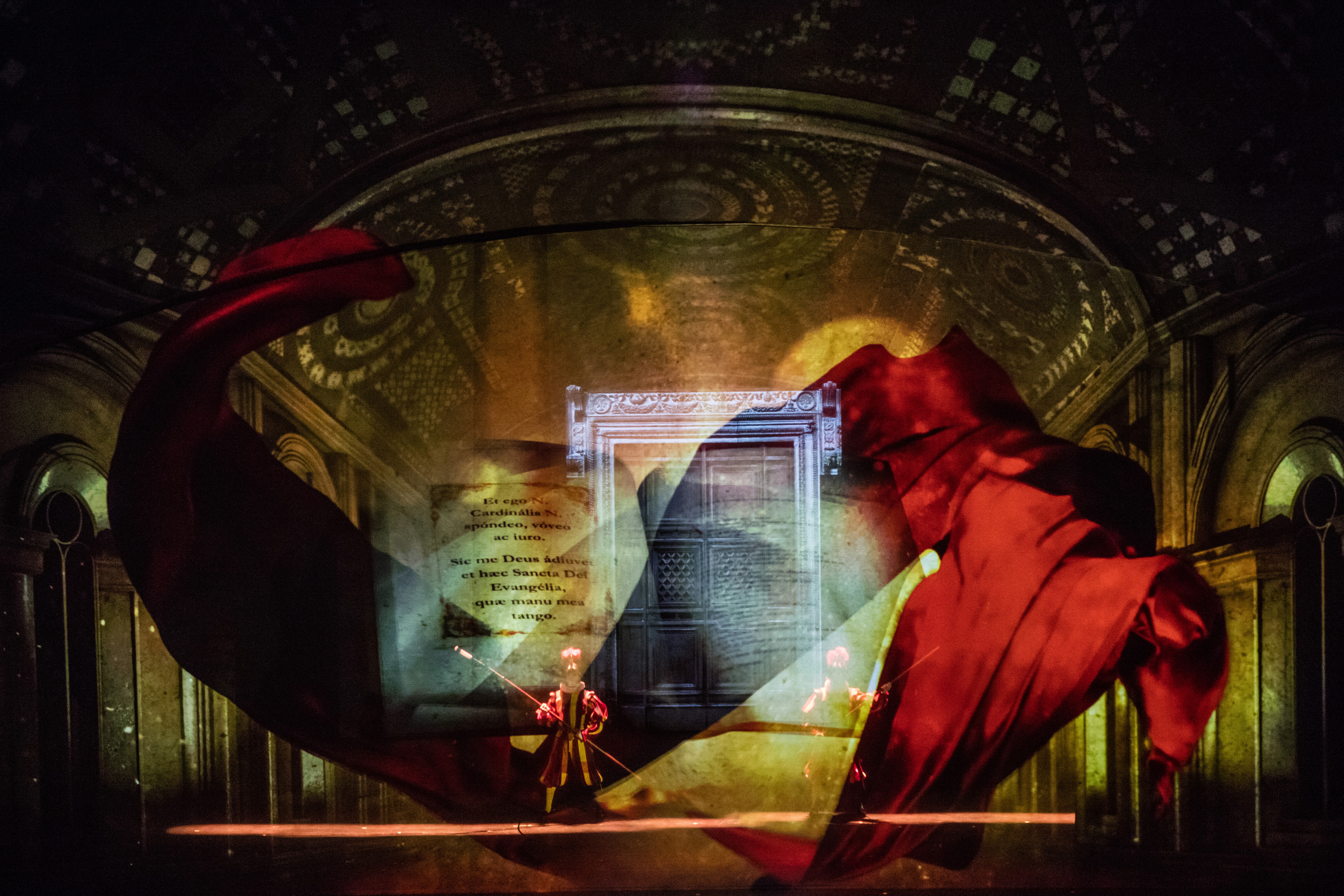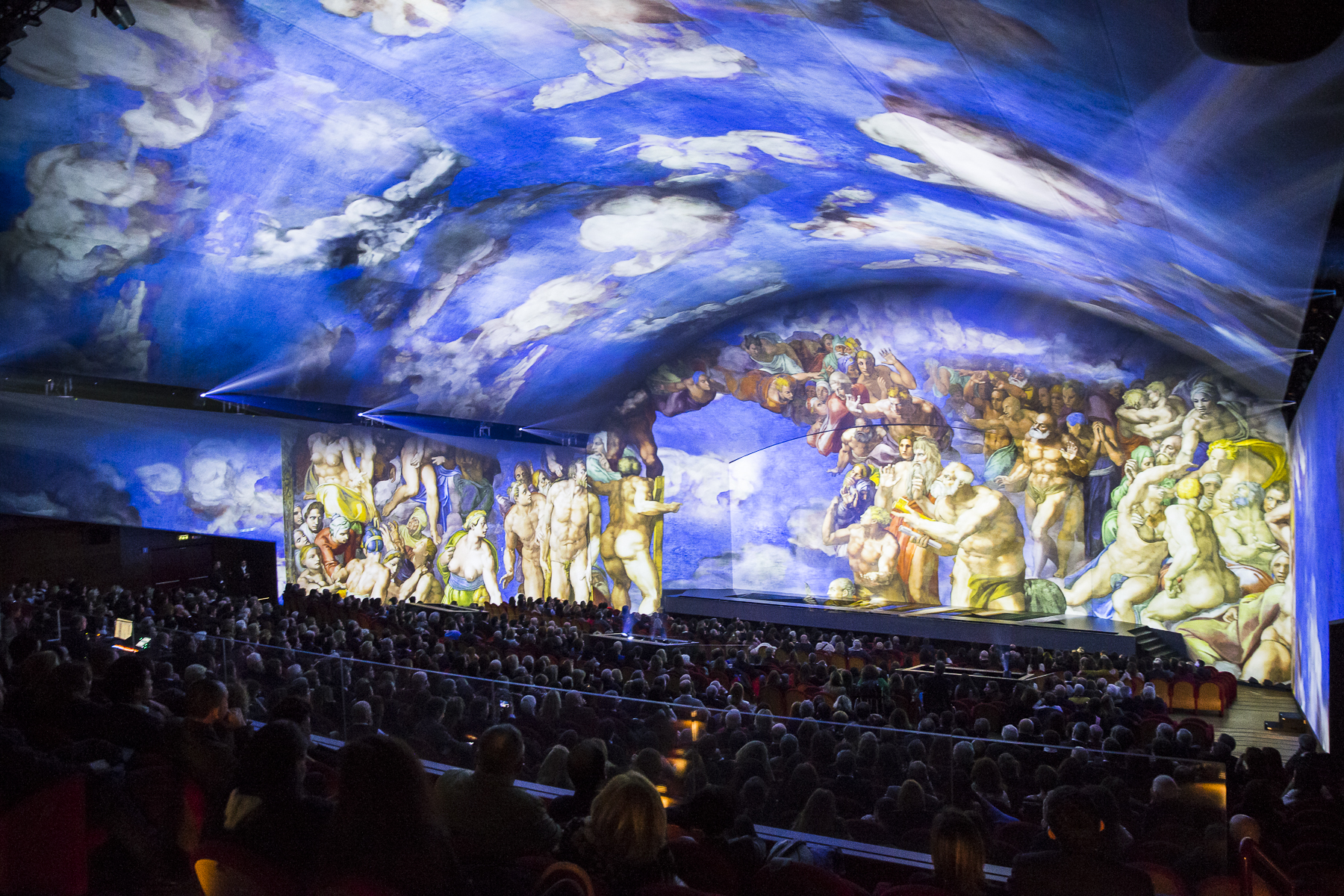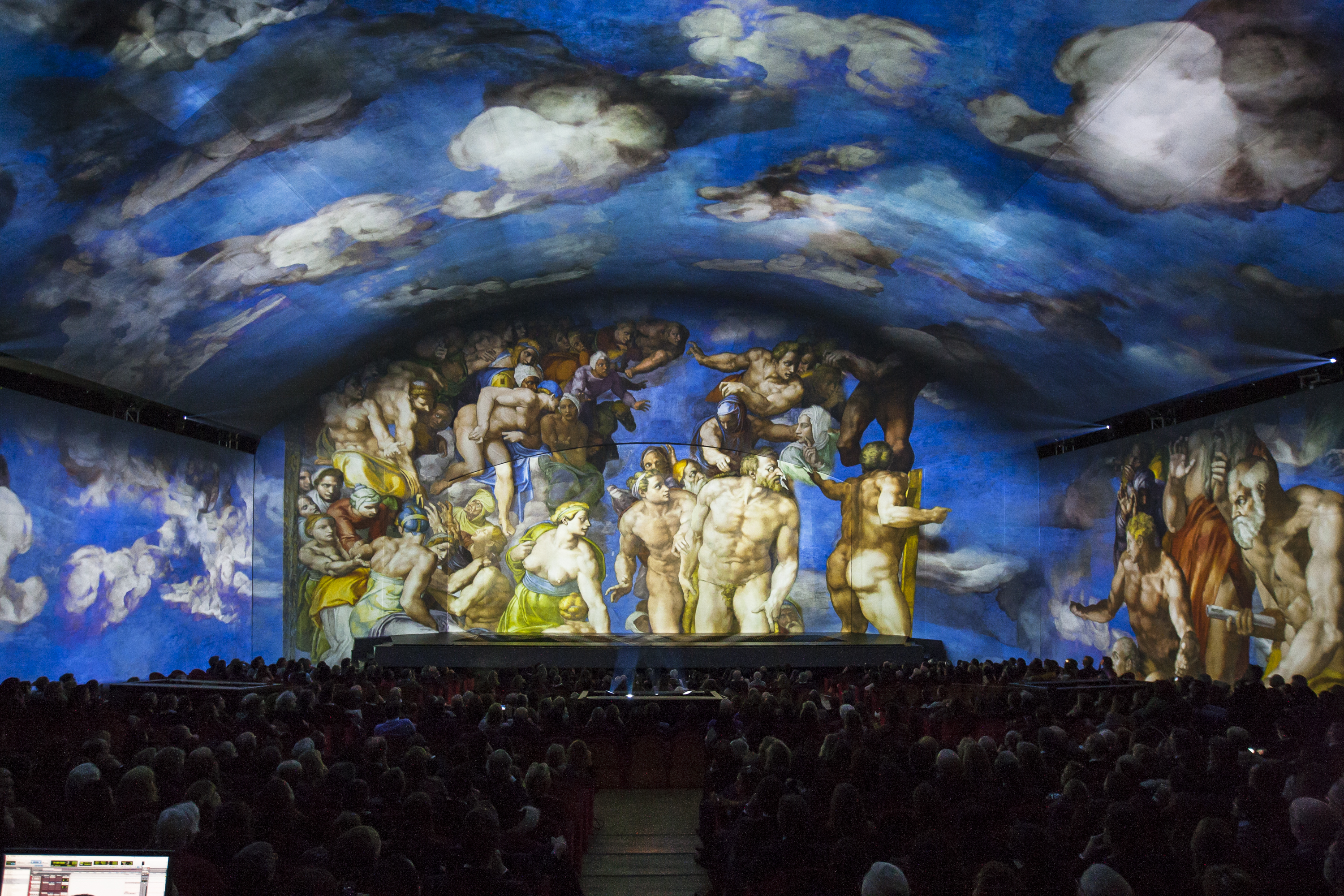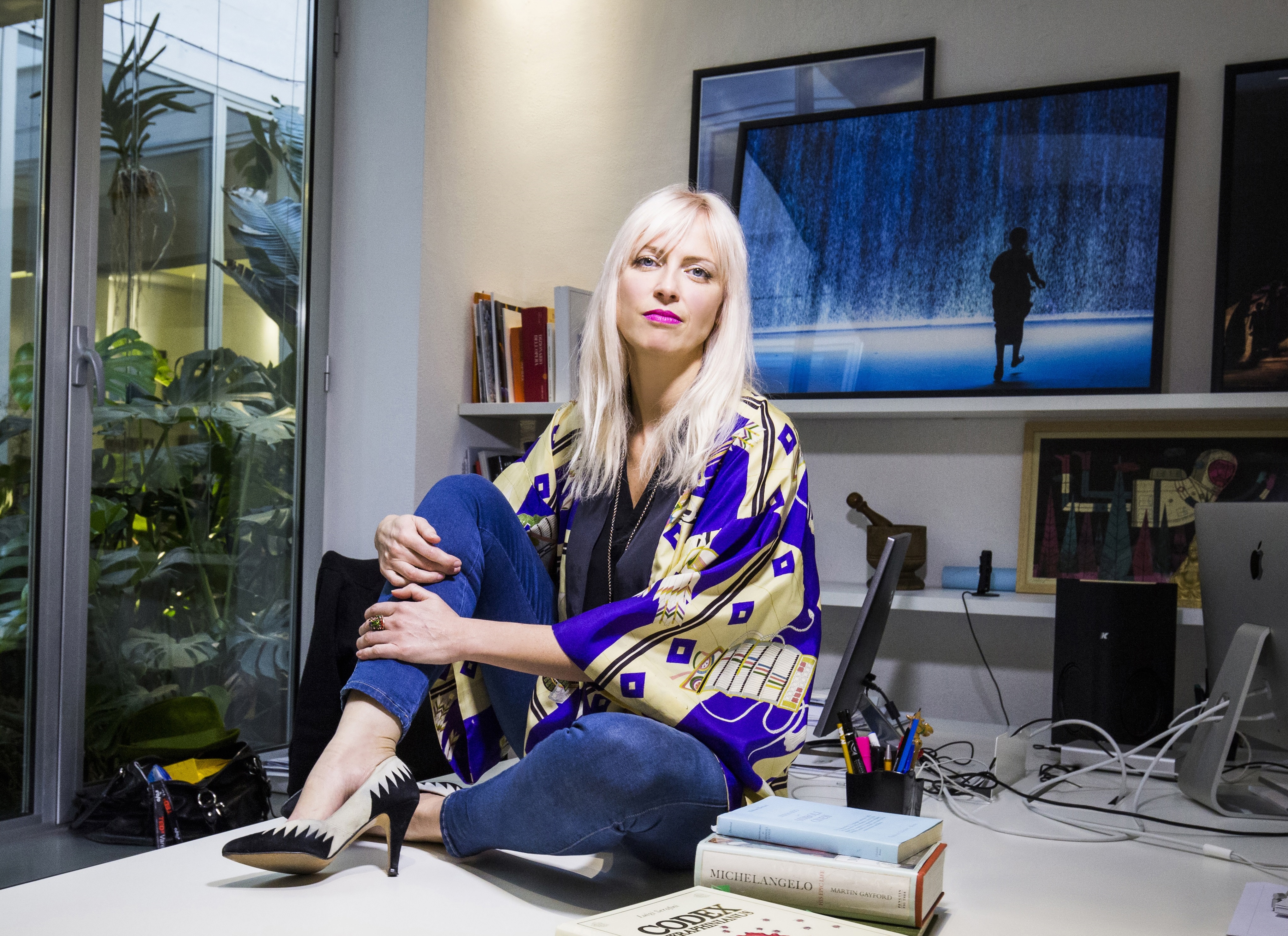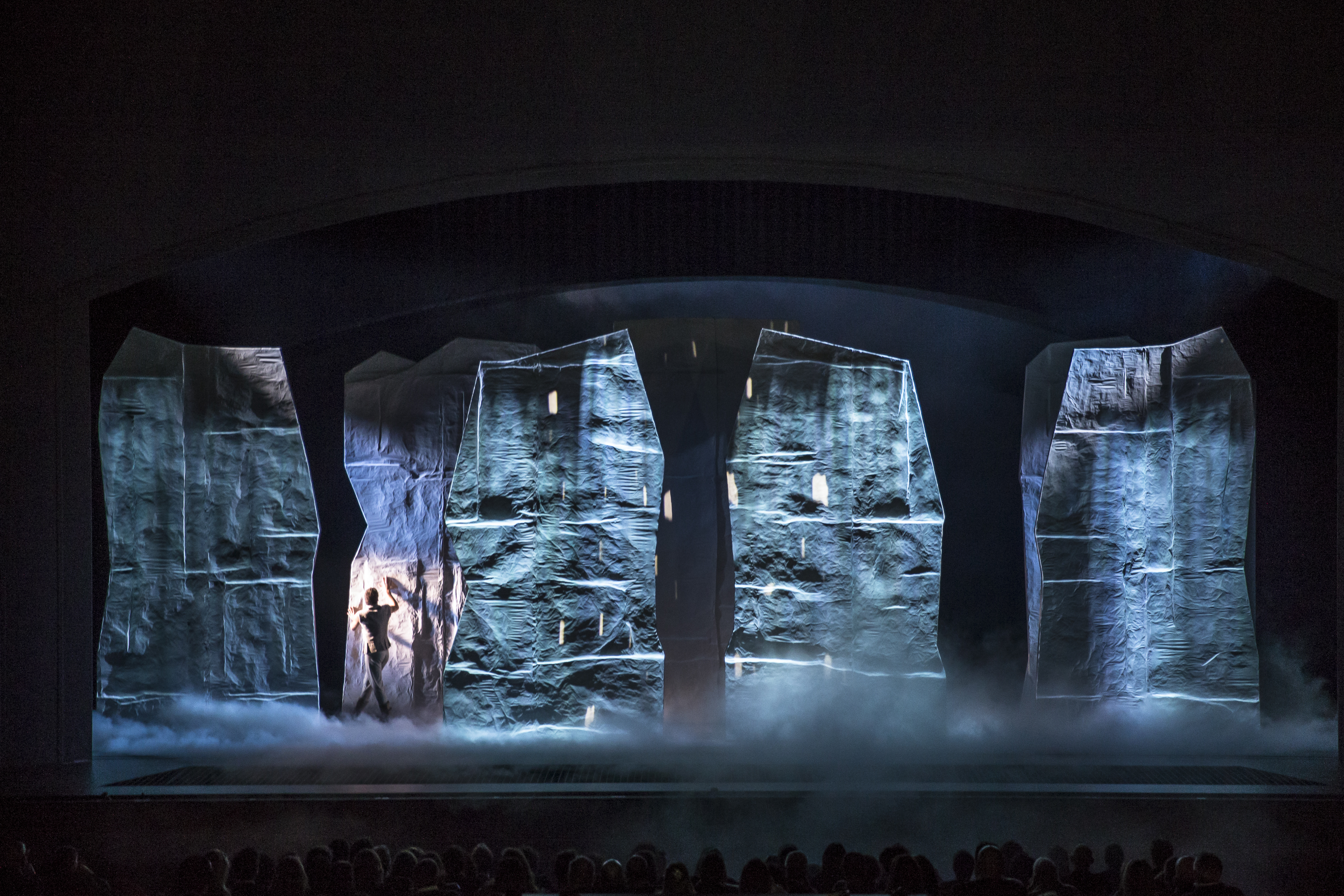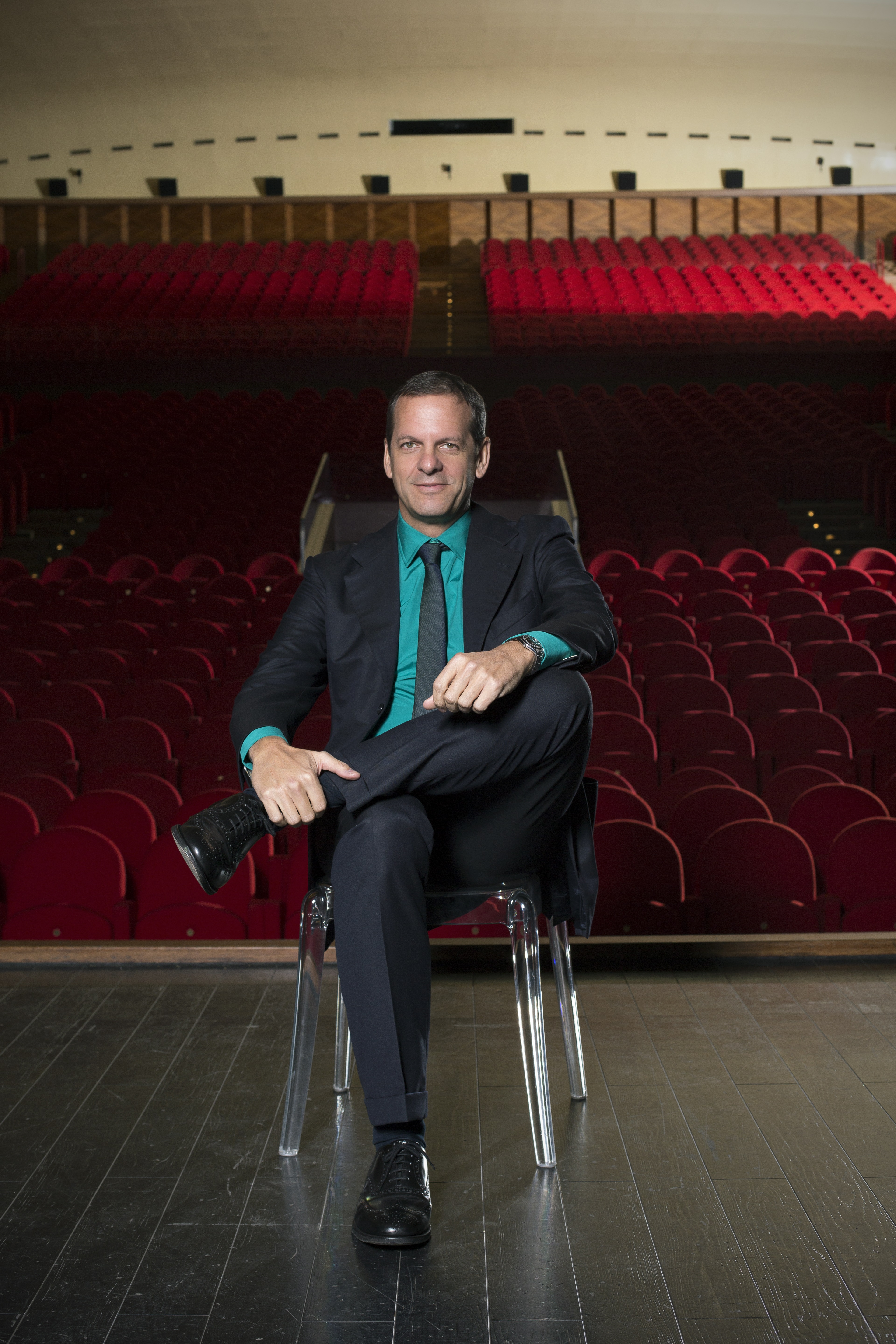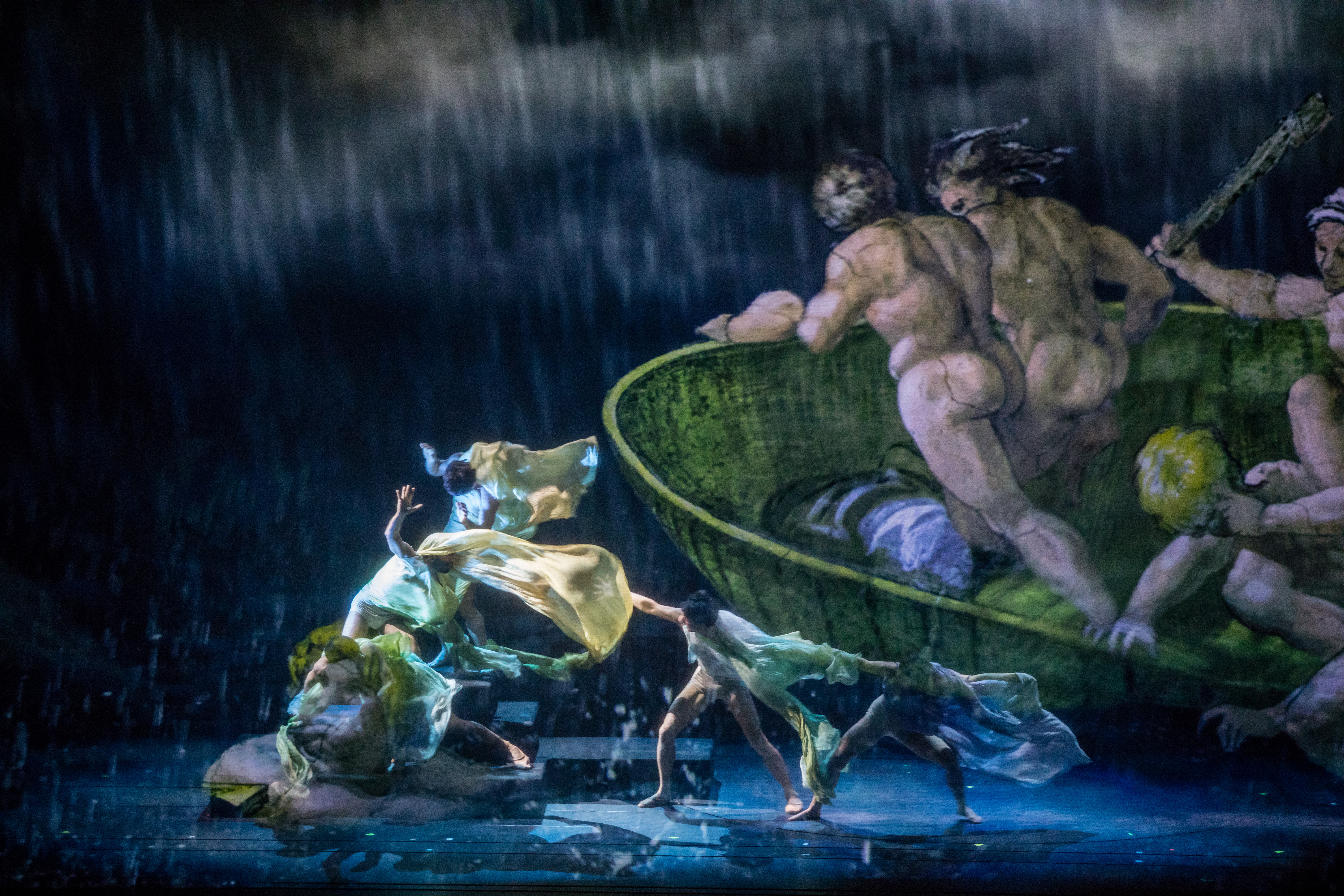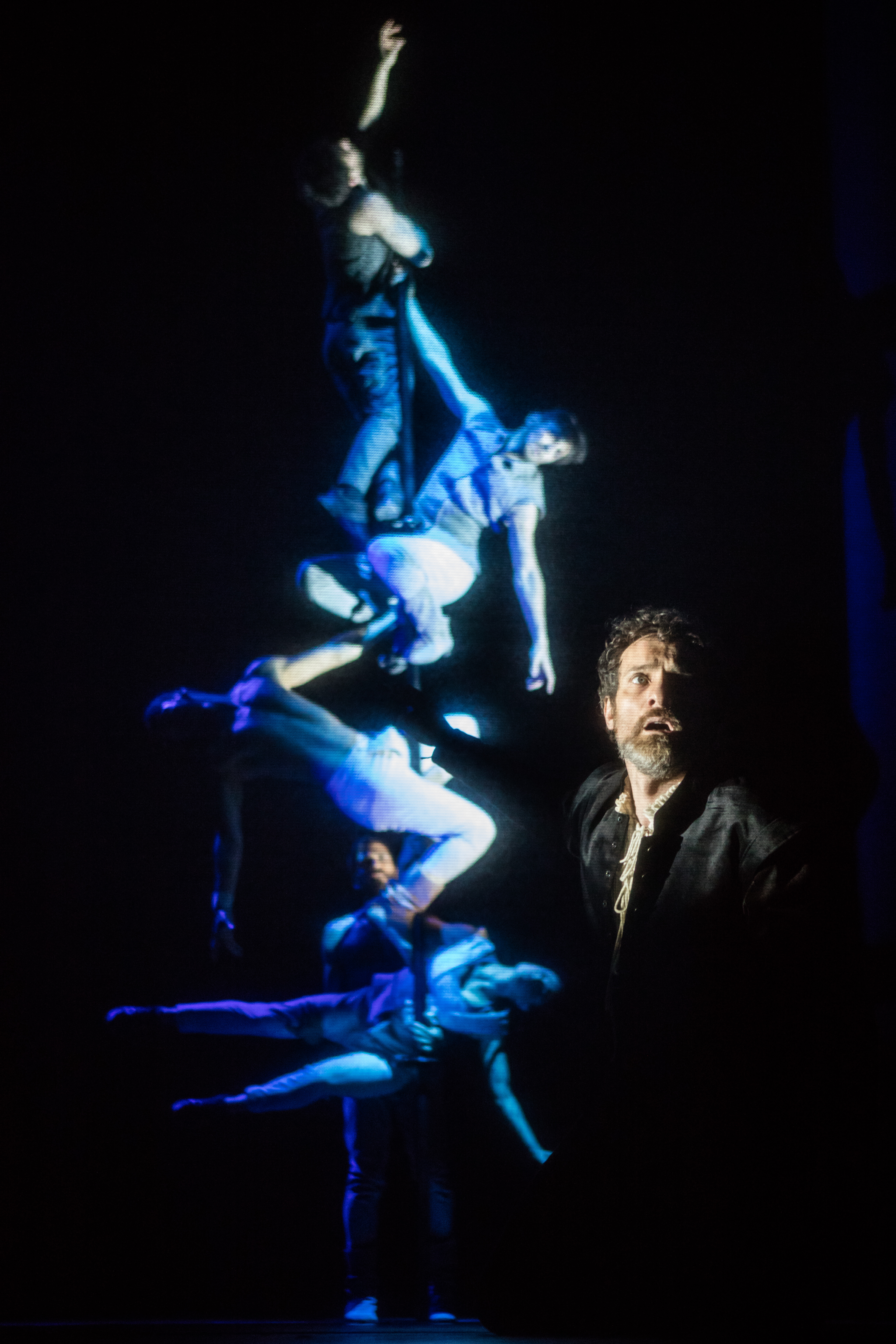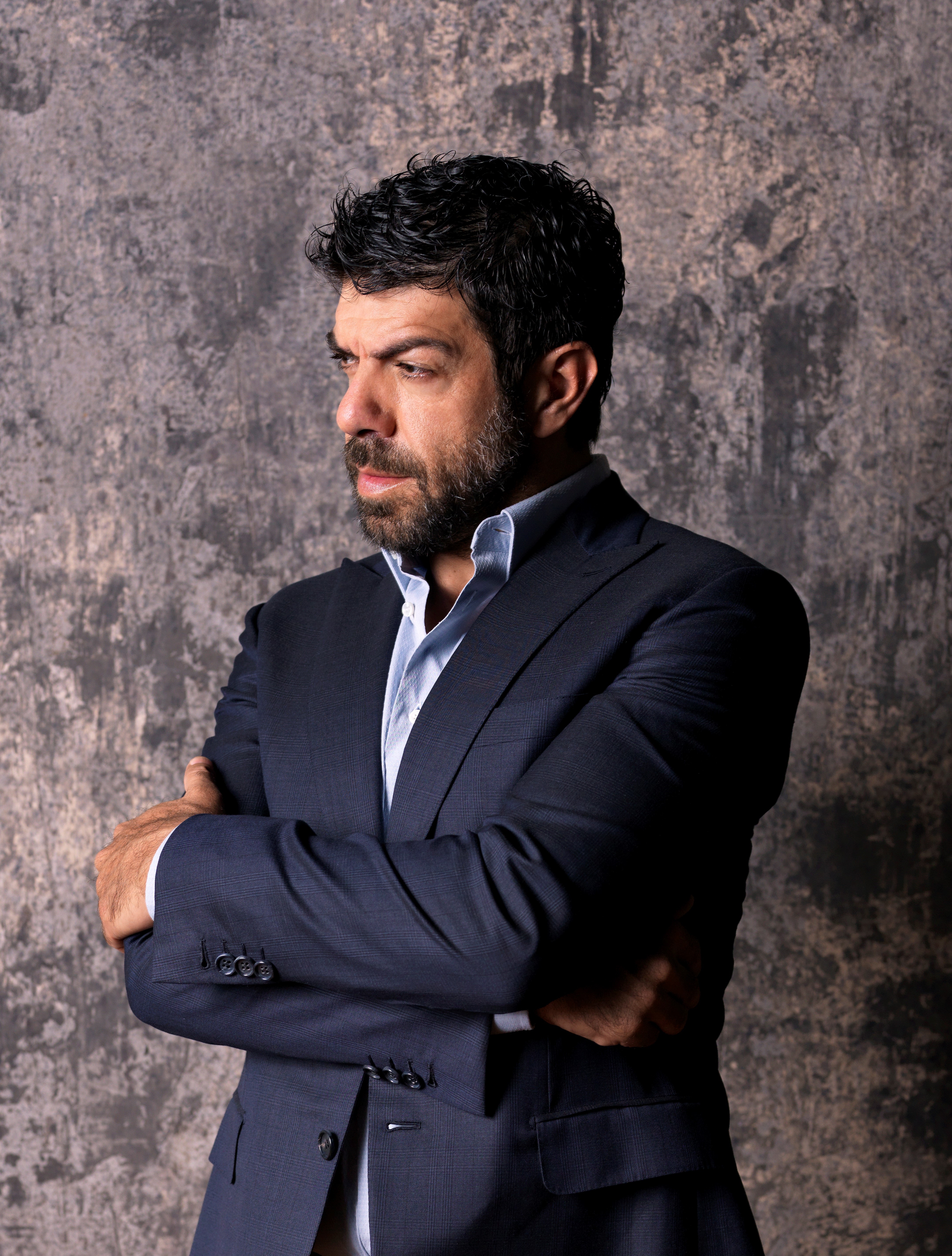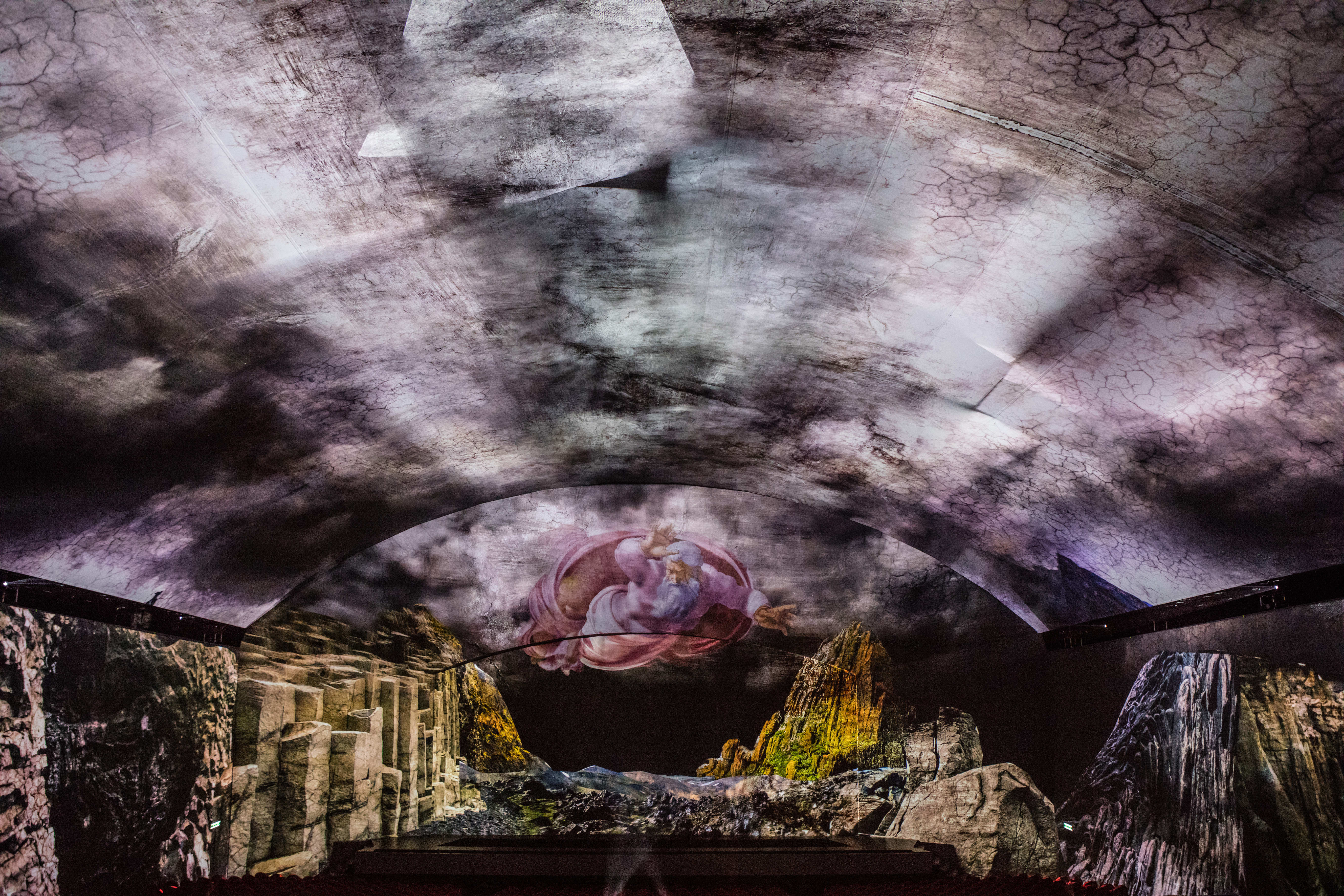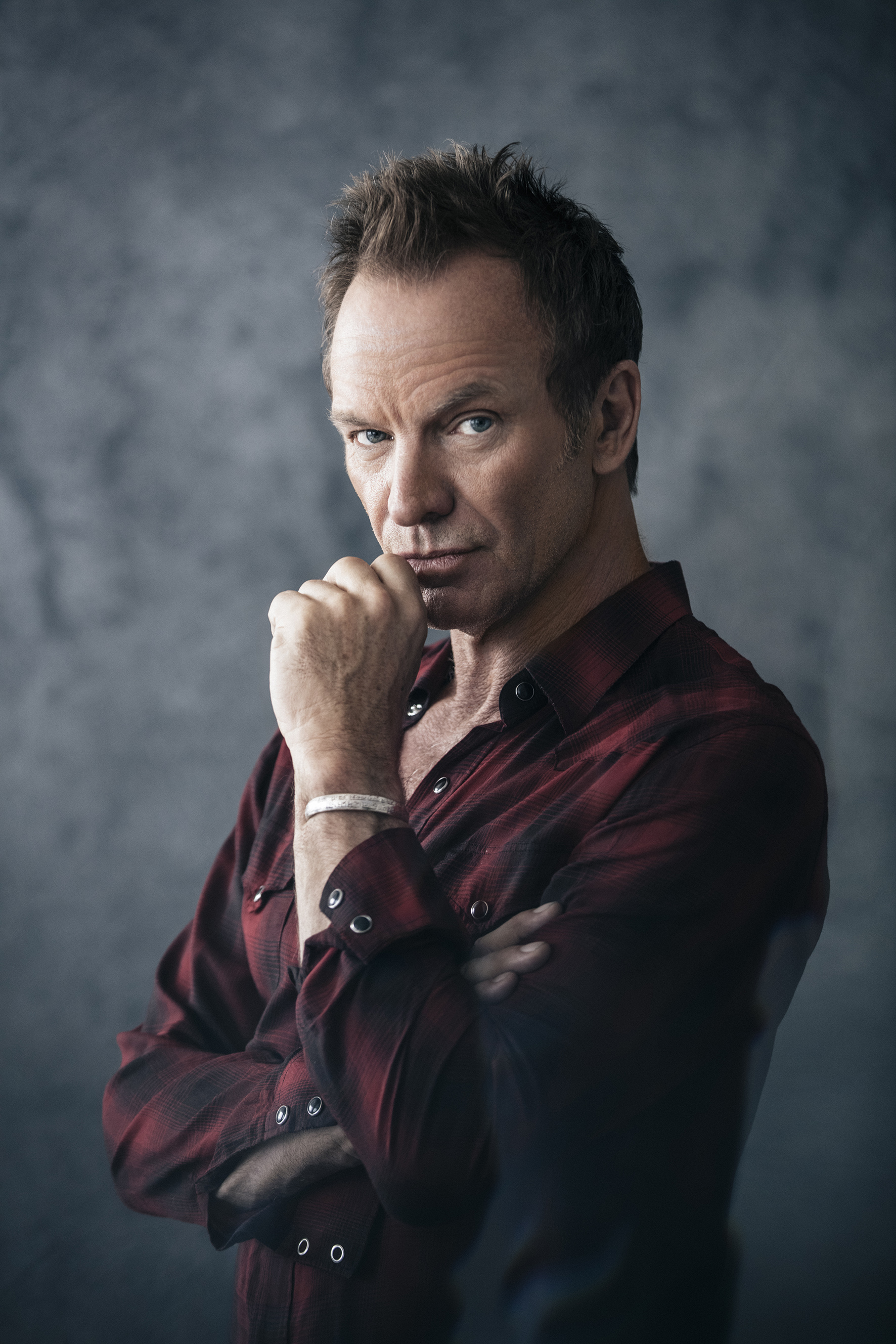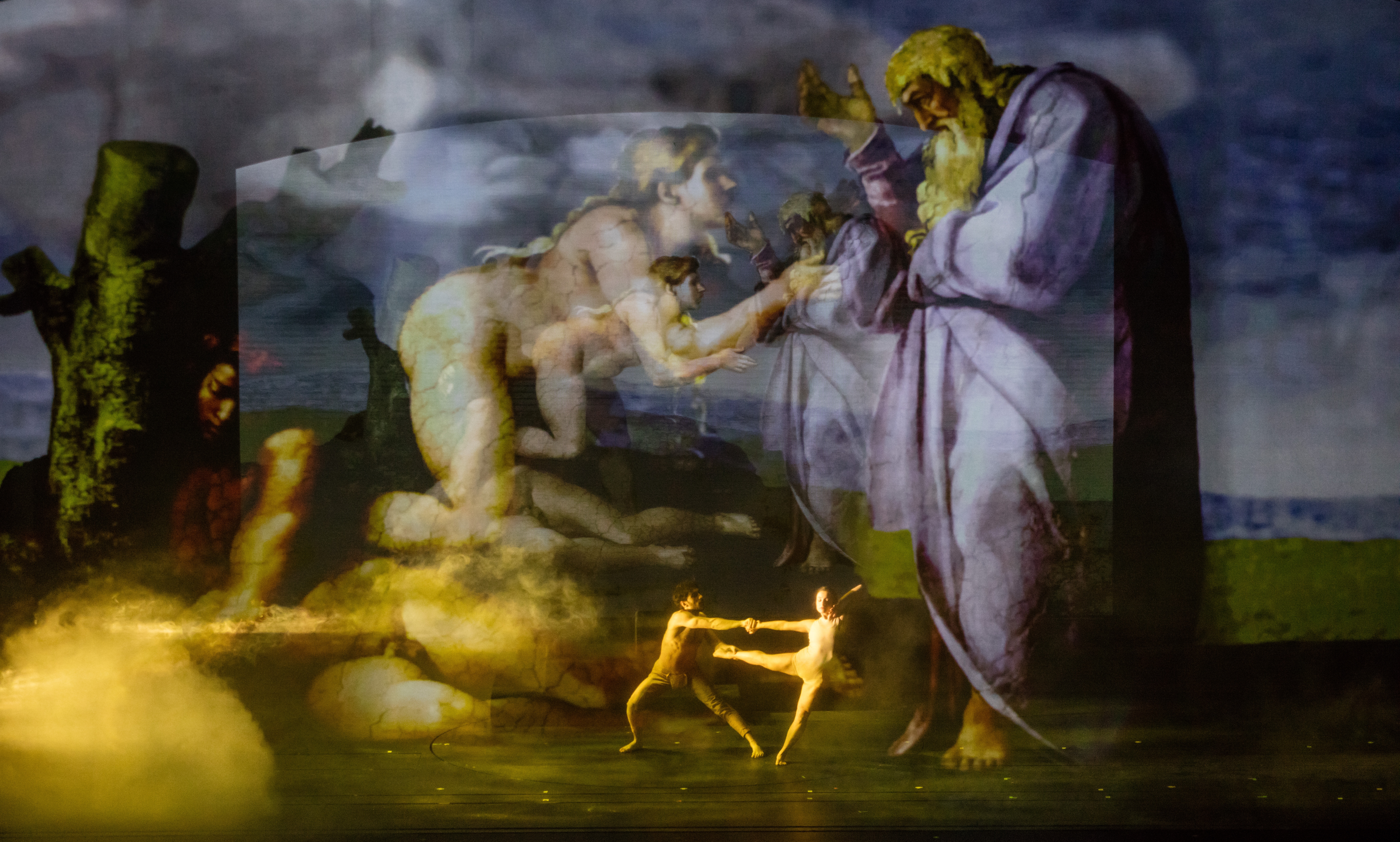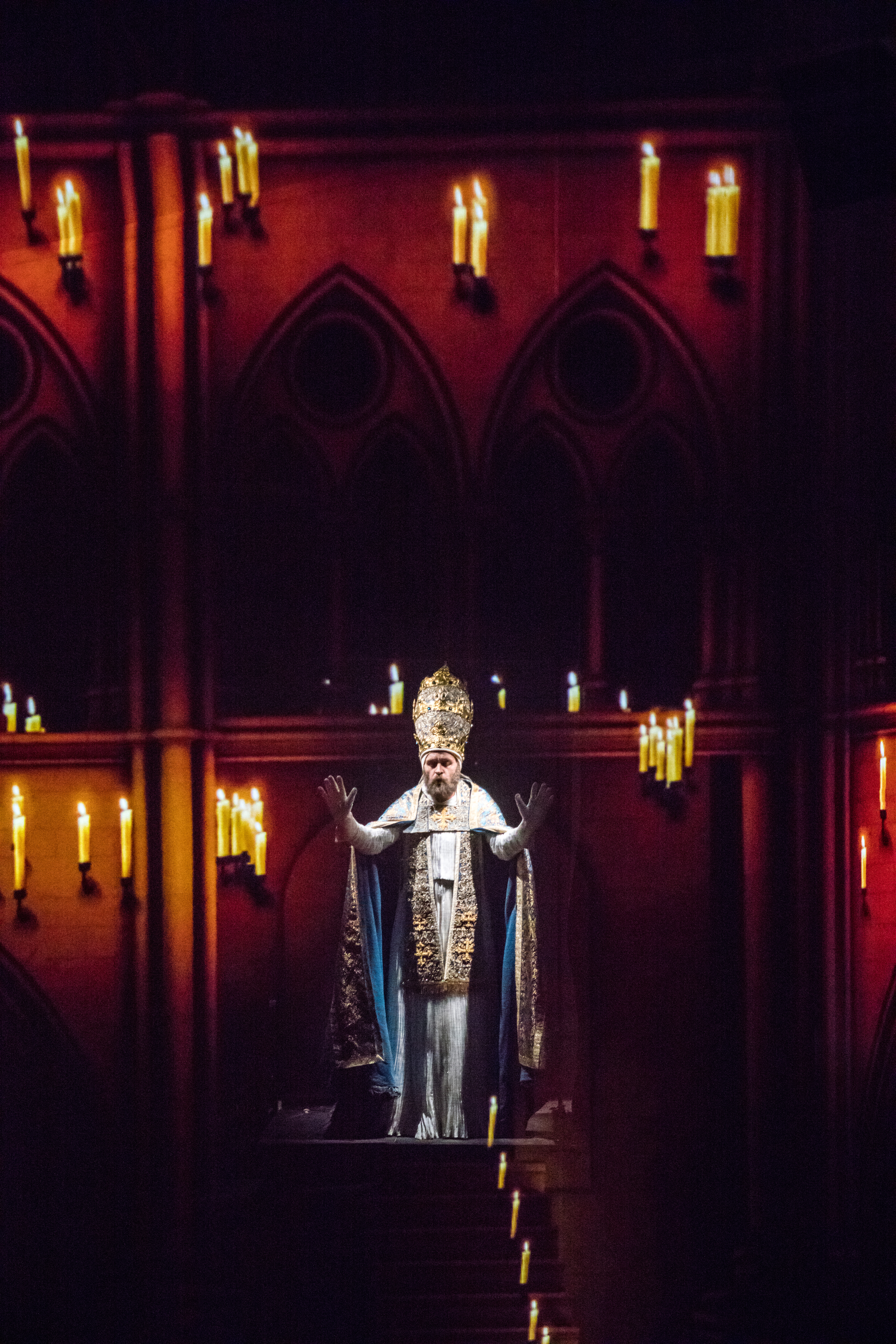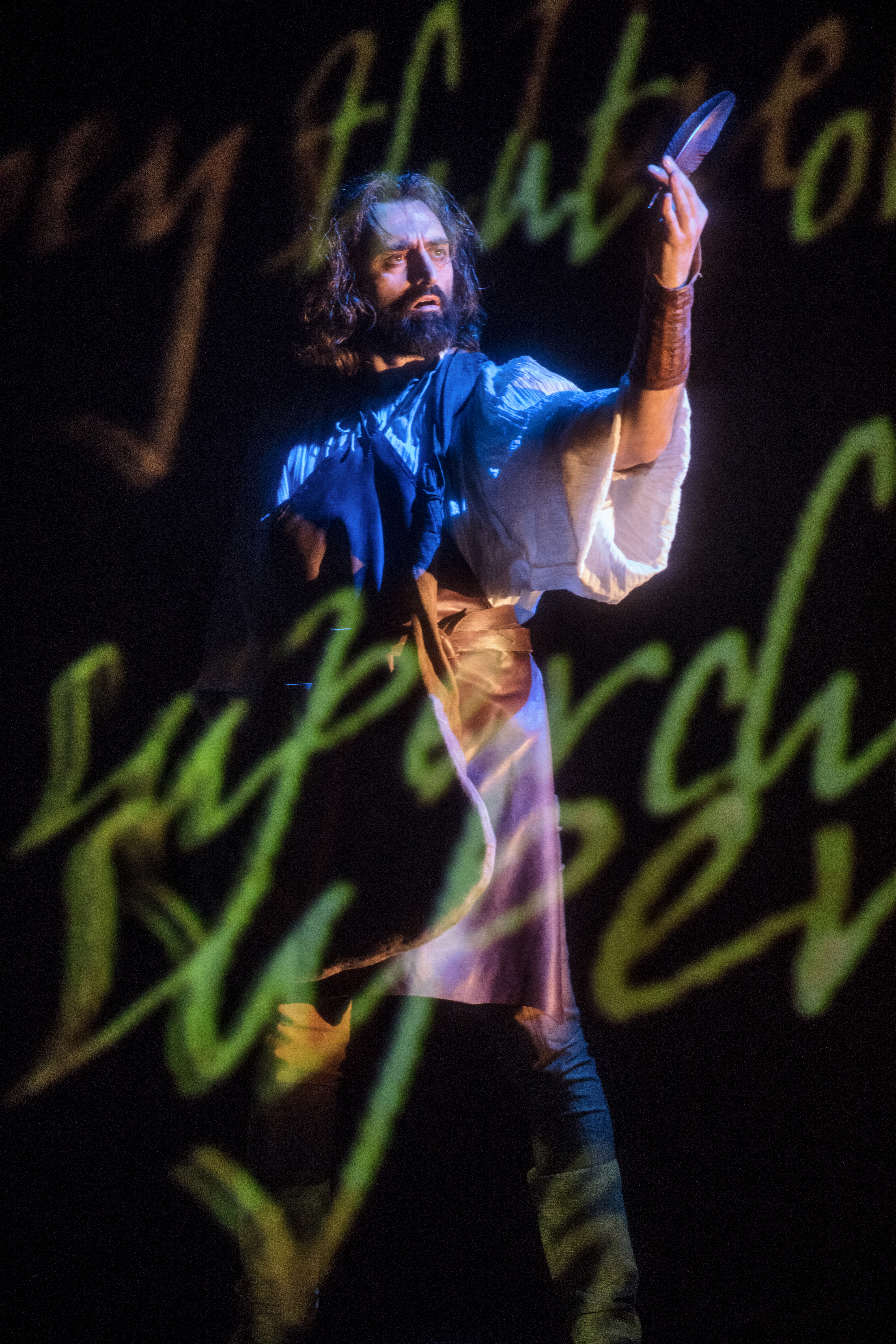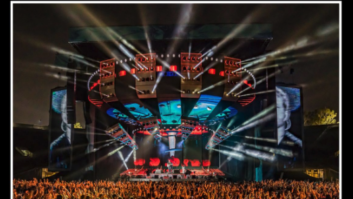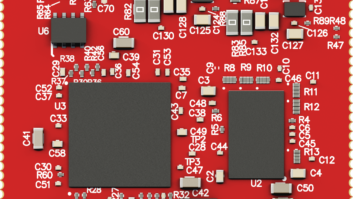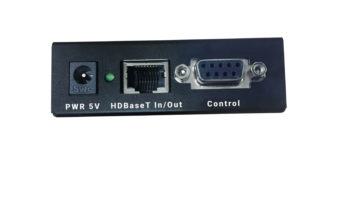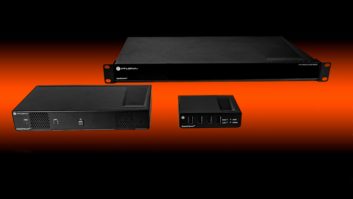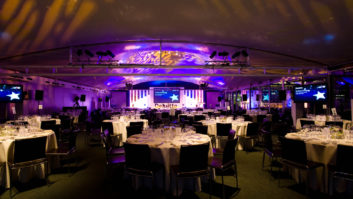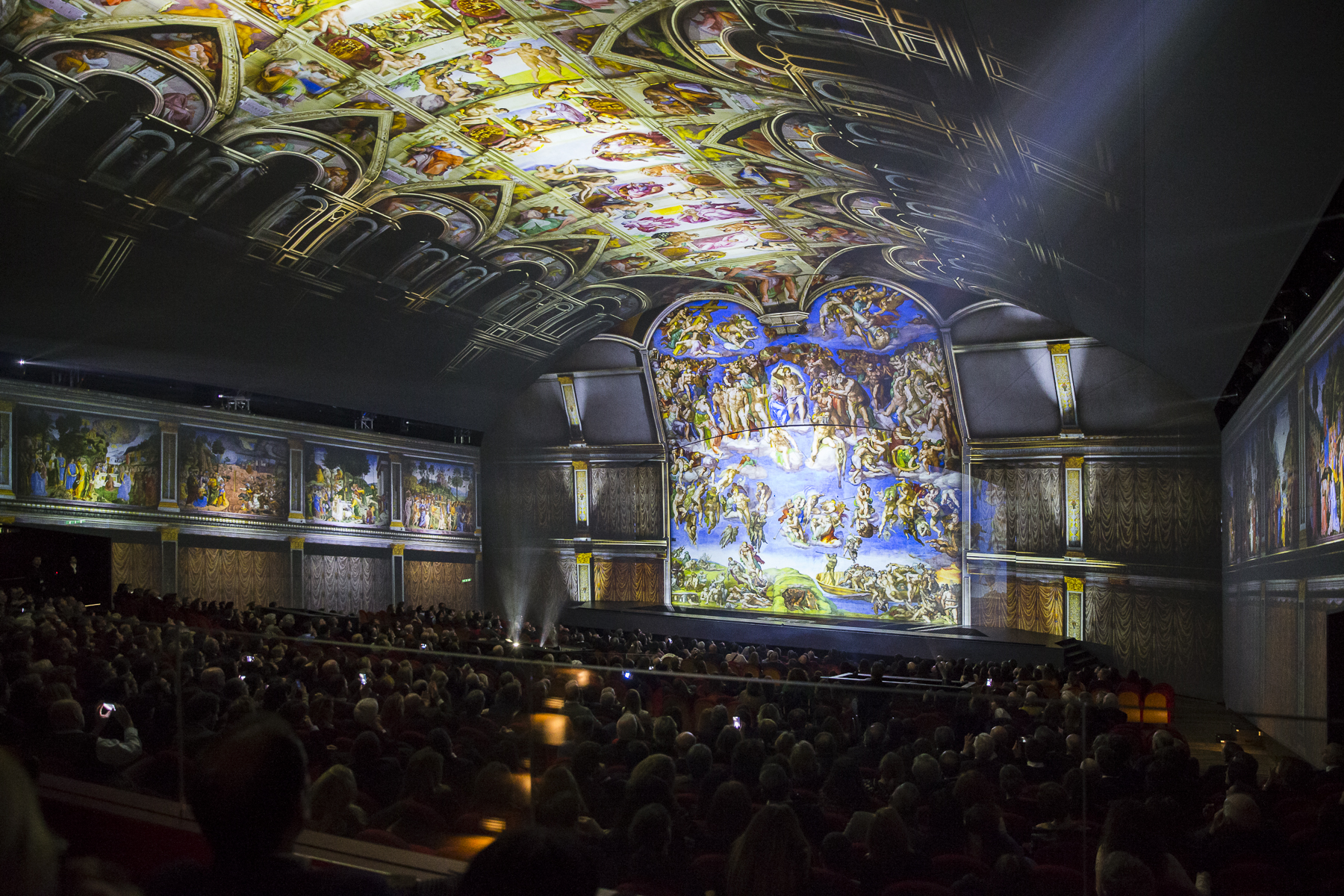
When in Rome, one of the more likely destinations you’re likely to gravitate towards, is the Vatican City, or to be more precise, the Sistine Chapel within it.
With over 25,000 visitors every day (over five million a year), the Sistine Chapel is one of the most visited tourist attractions on the planet, thanks (partly) to its examples of renaissance art.
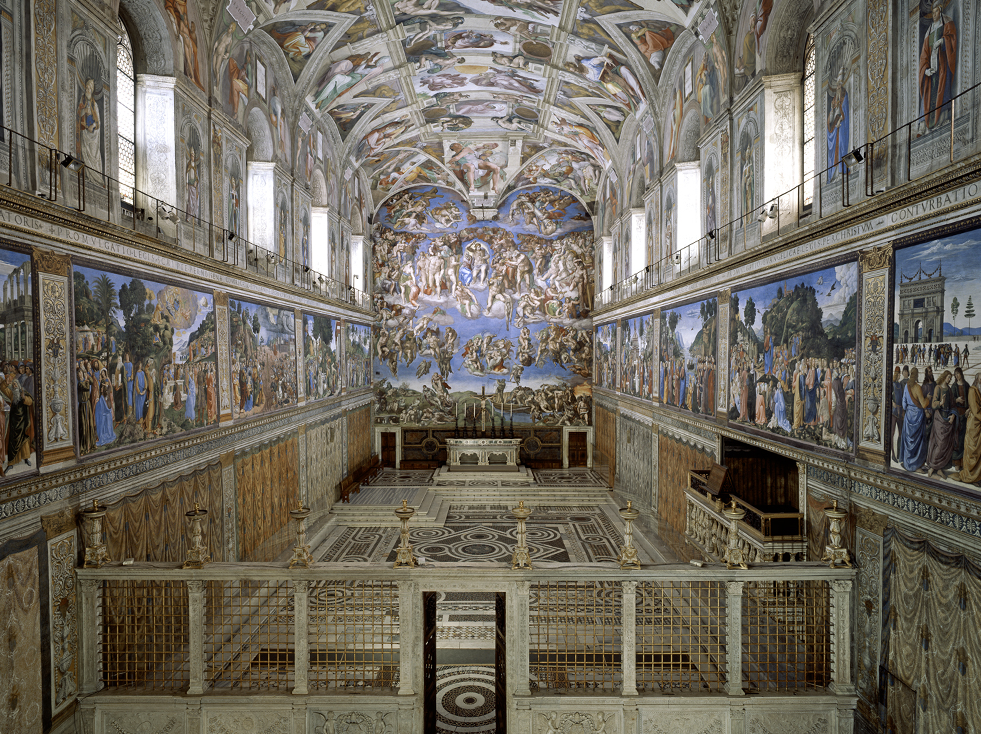
So, when I was invited by Panasonic to travel to Rome to see how it’s using projectors to re-create the ‘magnificence’ of Sistine Chapel at a theatre just a short taxi ride from the Vatican, a few eyebrows (including my own) were raised.
“Why would you want to recreate the Sistine Chapel in a city where you could actually go and see the real thing for yourself?” was one of many similar and often rather sarcastic questions asked of me in the office ahead of the trip. Answers, which were quickly answered as the curtain rose.
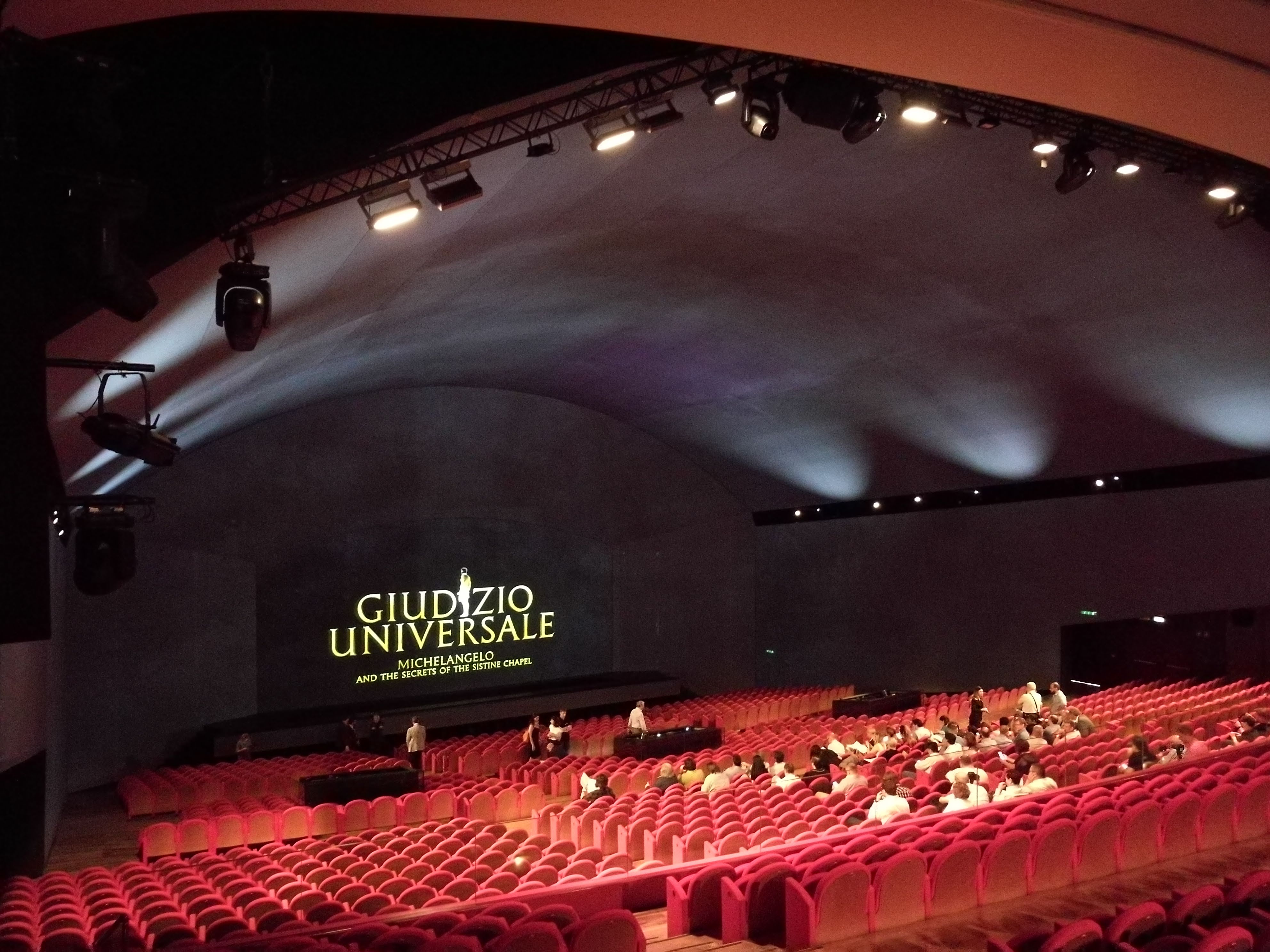
The production in question is ‘Giudizio Universale – Michelangelo and the Secrets of the Sistine Chapel,’ which was being hosted at the Auditorium Conciliazione of Rome Theatre – a venue, like many in Rome, with historical value.
It tells the story of how Michelangelo was chosen (forced?) to paint the Chapel’s iconic ceiling (taking between 1508-1512 to complete) and later as he neared the end of life, the Chapel’s alter (the Last Judgement – 1536-1541).
Now, on paper, such a story might be viewed as a hard sell (even in Rome) – particularly if neither religion nor art happens to float your arc.
But this is a performance not meant to provide simply an extended arm to the Vatican Museums (who supported the production) in telling what – until now – has been a largely untold story of one of the most famous artists in history.
The production is designed to not only inform and entertain – arguably at a level you couldn’t possibly reach at the crowded Chapel itself – but to truly immerse the audience with a visual, audible and sensory experience – with AV playing the lead from start to finish.
“With Giudizio Universale, we wanted to create a show completely new, in which the genesis of a masterpiece of universal art is narrated by mixing all the languages that the world of live entertainment has today,”explained the show’s creator, Marco Balich ahead of the performance, which has been seen by more than 102,000 people since it opened in March (38pc Italian).
“The use of technology creates a magical and immersive experience that leaves an enduring impression for everyone. We like to think that the spectators who will come to see our “Giudizio Universale”, especially the younger ones, can leave the Auditorium Conciliazione inspired by a renewed awareness: there is nothing more exciting than the beauty of art.”
Building the Sistine Chapel
Having sat through the hour-long performance, Balich’s comments are difficult to dismiss, with AV playing an intrinsic role in the story telling from the off (rather than an add on).
Indeed the whole interior of the theatre – which has a long list of building restrictions making installation more challenging – has been transformed to ensure the “magic” that Balich describes, is not hindered or spoilt, helping maintain the illusion.
The ceiling, once flat, is now curved to mirror that of the Sistine Chapel, with temporary installed (unspecified fabric) panels used create an arch from the front of the stage to the back where the final row of seats meet.
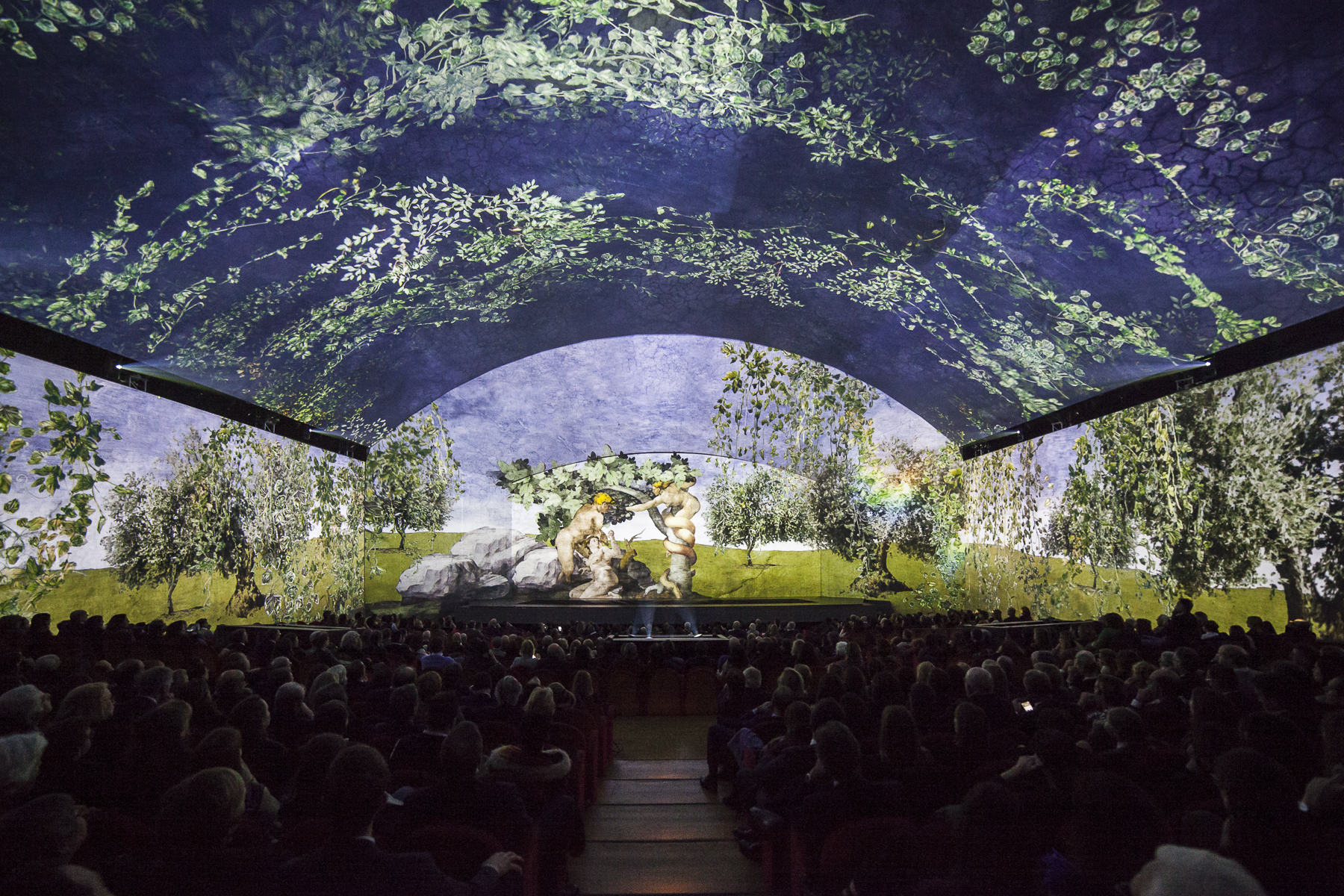
Walls, like the ceiling, have also been coated with the same panels, adding the slightest of curve into the stage and ceiling area to complete what could be described as VR CAVE (cave automatic virtual environment).
Behind the panels hide 70-plus DeltaQ Bose speakers, each strategically placed to ensure sound quality is maximised and a consistent performance to every seat, whether you’re at the front, middle or the back. (Incidentally, the cheap seats here are at the back, not the front). The panels, explained Bose – who ironically provide audio technology to the actual Sistine Chapel – do not impact the sound being generated behind them on the journey to the audience.
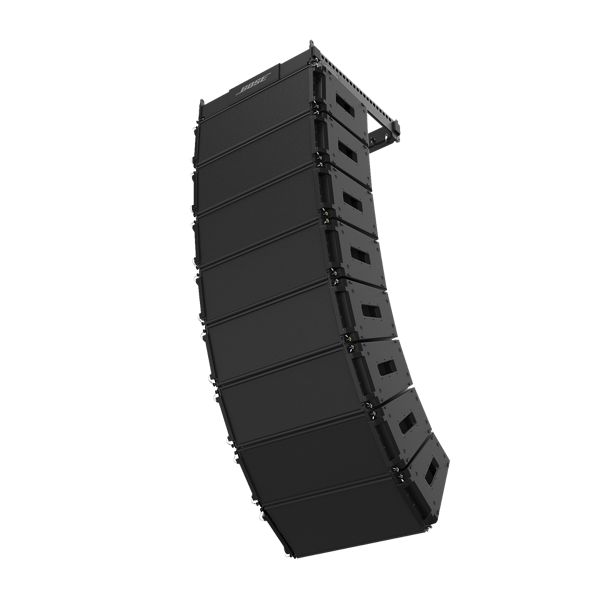
“Unlike any other musical event where the audience’s attention is aimed at front stage, in Giudizio Universale’s case the spectator feels completely immersed into the artistic experience,” explained Moreno Zampieri, Bose Italy Technical Supervisor who directly monitored the installation’s design. “A powerful audio installation was needed, being transformed into an integral part of the three-dimensional journey. The installation goes beyond the typical 5.1 surround: if we count the relevant points this is a versatile 9.4 system.”
Balich, who was also artistic director and producer of the Olympic Ceremonies for Turin in 2006 and Rio in 2016, added:“Their [Bose’s] design was able to combine the obtainable immersive audio experience with a lower quantity of audio points to make Giudizio Universale an extraordinary, unique and powerful show. I want the public to leave the Auditorium excited.”
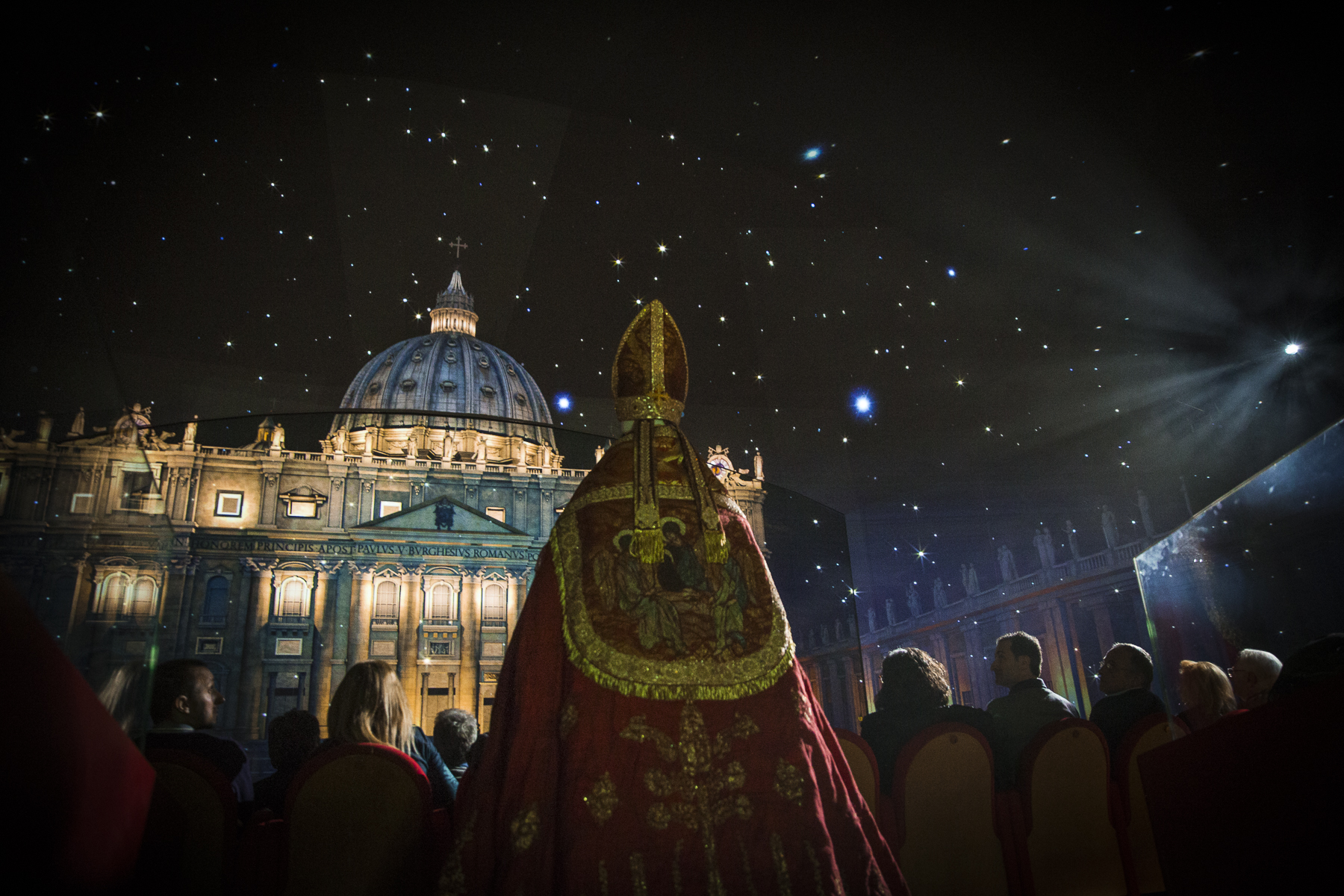
Visual spectacular
The visual aspect of the show was dominated by official partners Panasonic for the projection technology, whilst Osram provided the lighting effects.
Whilst the audio is crucial, the visuals are what steel the show.
In total, 30 4K Panasonic projectors were used, covering the auditorium, during the four acts.
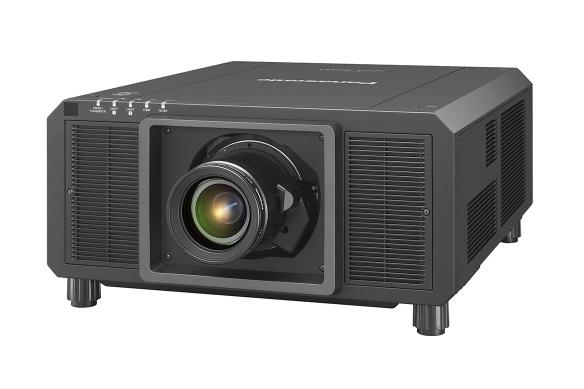
Throughout the performance, video images and scenes were projected across the theatre to create the various environments being depicted – occasionally resembling a sketch from Monty Python, it must be said.
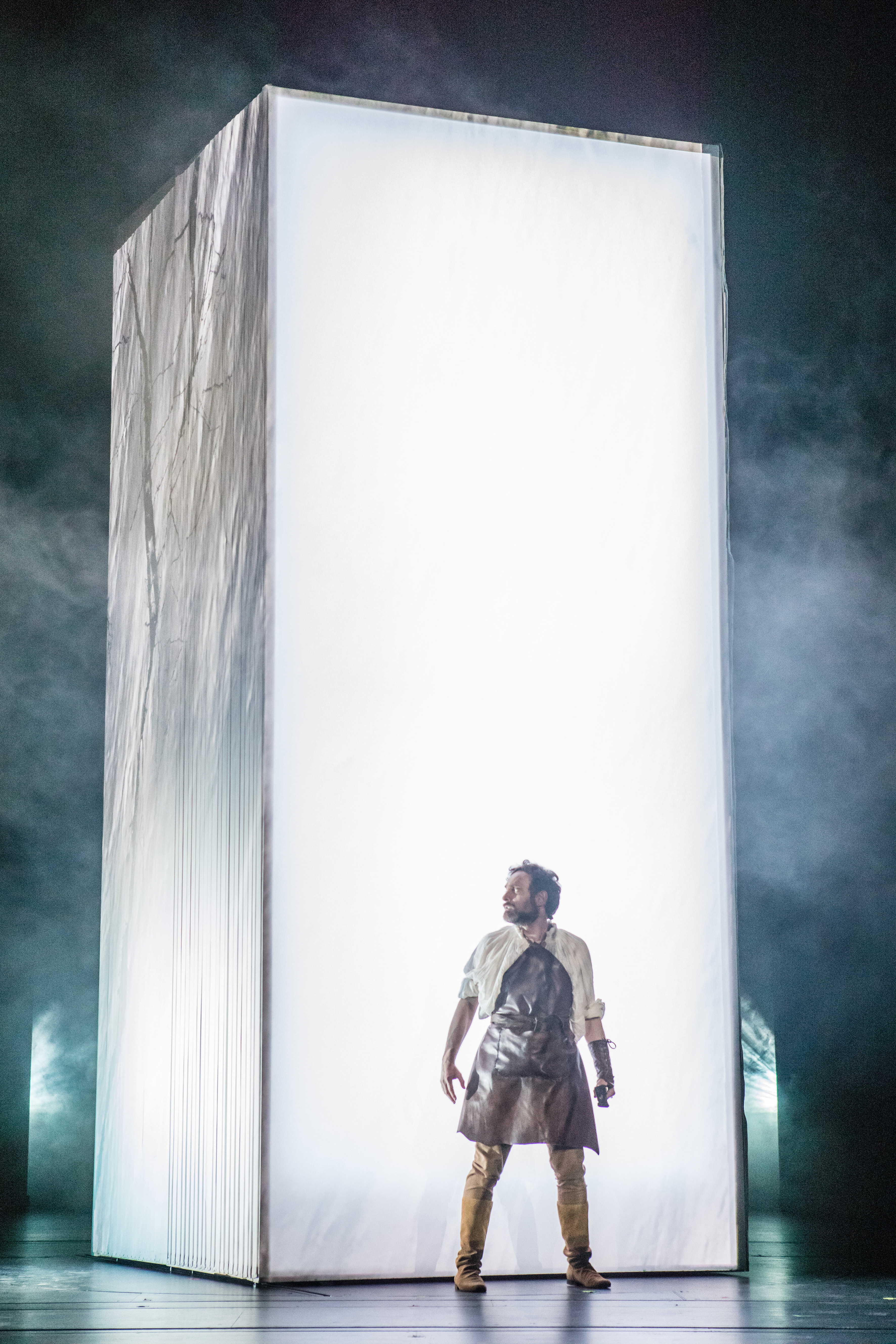
Some of the more standout images/scenes, included: a 3D depiction of Michelangelo sculpting the statue of David from Marble, the Sistine Chapel pre and post completion, St Peter’s Square (where crowds gather to see the pope on his balcony), whilst other more dramatic scenes, saw immerses us into a raging storm in the middle off the ocean, depicting Noah’s Arc, whilst other more tranquil moments saw us drifting through space.
The image quality was comparable to that of a digital display, with three layers of projection used to provide a “guaranteed” 400 lumen per square meter for every image shown.
“We chose Panasonic because as a brand it has a reputation for reliability in laser, DLP technology,” Daniele Parazzoli, MD of Event Management, explained. “In representing the frescos of the Sistine Chapel, the aim was to ensure a result equivalent to the original – the chromatic consistency and the contrast ratio of Panasonic’s projectors were determining factors in achieving the objective.”
Panasonic used three different models of projector located across five different sectors of the auditorium. These included:
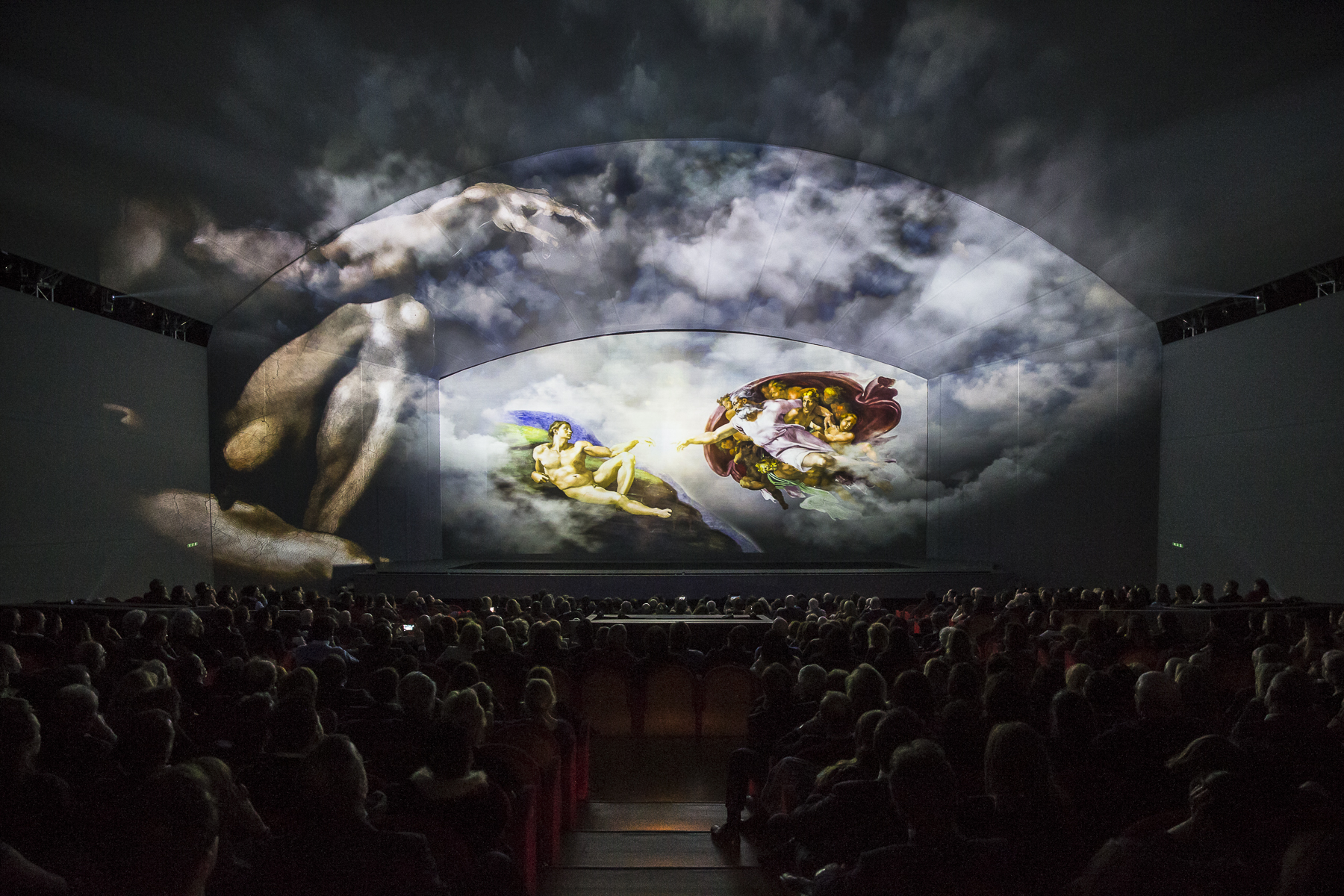
- The two lateral walls: 8 x 31,000 lumen PT-RZ31K
- The vaulted ceiling: 6 x 20,000 lumen PT-RZ21K and 2 x PT-RZ31K
- The proscenium: 4 x PT-RZ31K
- The front gauze: 4 x PT-RZ31K
- Mapping Michelangelo’s David statue: 2 x 12,000 lumen PT-RZ12K
- And finally, 4 x PT-RZ21K projectors with EL-D75LE95 short throw lenses for projecting vertically onto the stage from above.
“It is a great honour to be part of this unique and original event, where art is married to the most sophisticated technology to create live entertainment,” said Jan Markus Jahn, director visual systems solutions of Panasonic Europe. “It is thanks to the creativity of Marco Balich and Artainment Worldwide Shows, that we have had the opportunity to showcase our cutting-edge laser projection technology in such an artistic way.”
Balic added: “Without access to the very latest technology, we could never have succeeded in giving concrete expression to our vision, using immersive 270° projection to engage new generations and enrich their knowledge with the artistic masterpieces from the past.
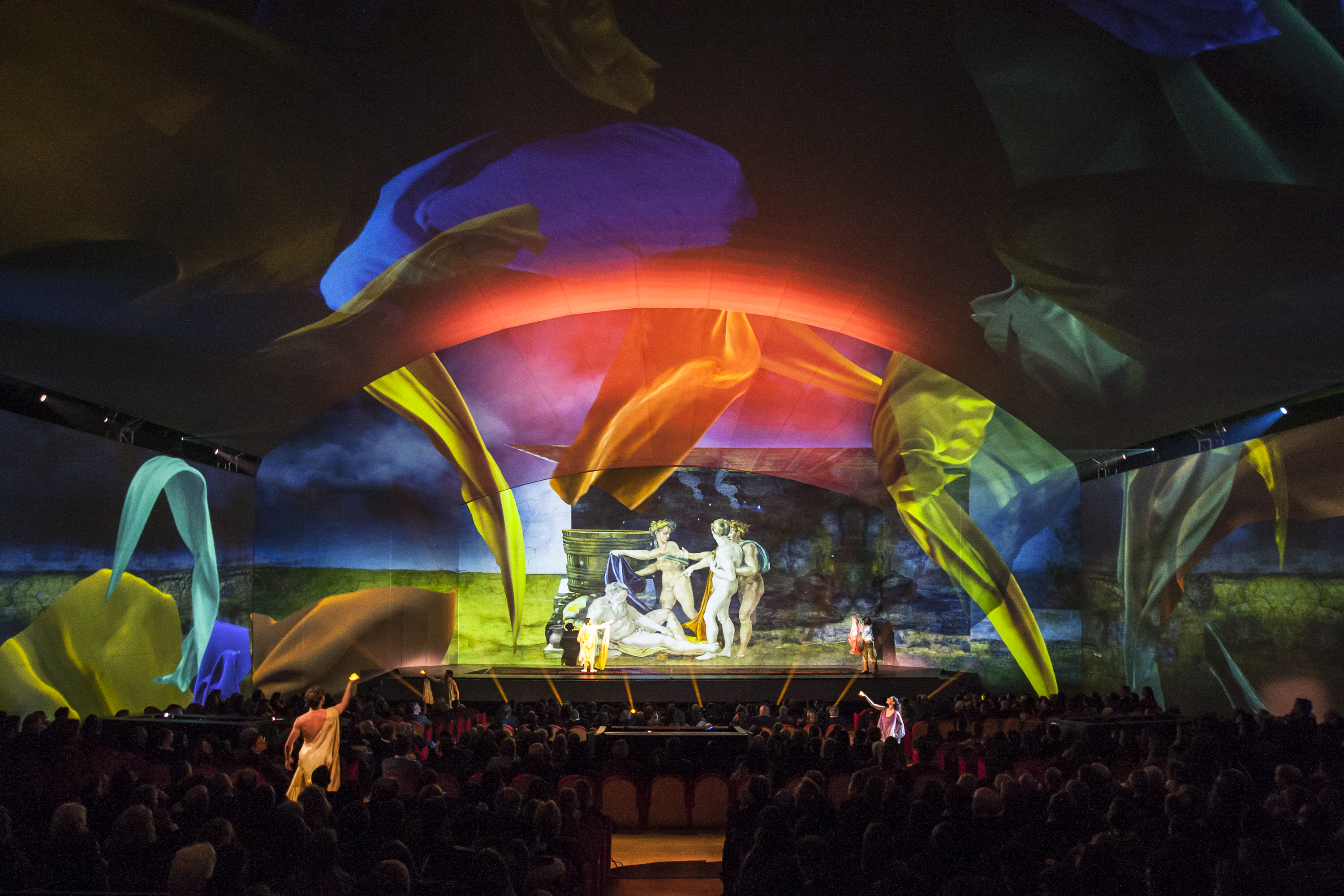
“It was essential for us to be able to rely on multi-level technology. Above all, it had to meet, and if possible exceed, our expectations in terms of image quality and brightness. Secondary to this, it was vital in terms of reliability to have easy to use solutions, so we could concentrate on the production of content which would produce the ‘wow’ effect, which is exactly what Panasonic has given us.”
In addition, to enhance the experience further, 15 different lighting products were used from Osram sub-brands, Claypaky and ADB.
These “state of the art” LED technology were used for specific special effects during the show, such as lightening (Stormy stroboscopes), fast moving mid-air beams (Axcor 300) and K-EYE, used to “wash” the stage and audience in colour.
In addition, lighting was also used to help create a more sensory experience during the show.
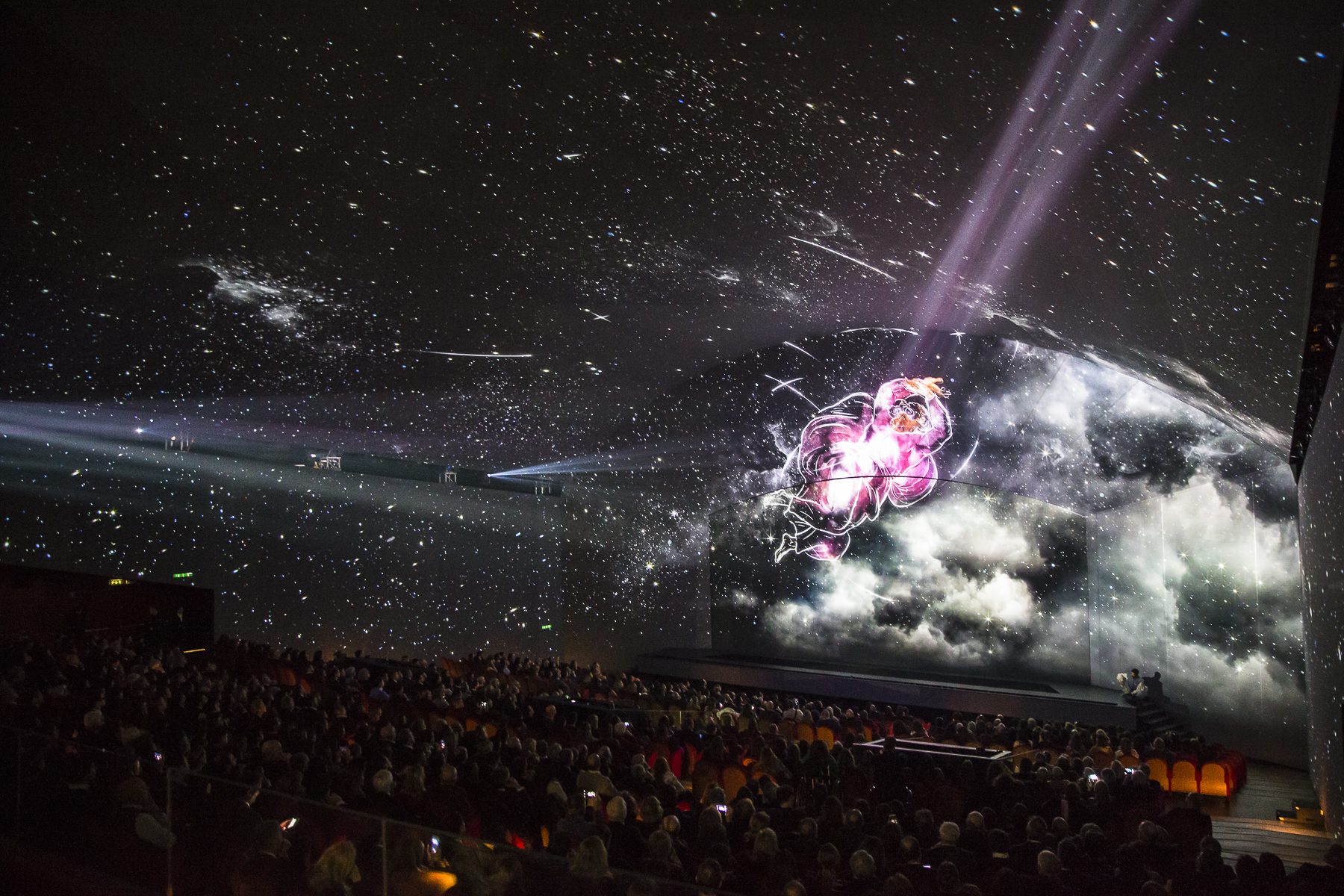
For example, a scene during the finale displayed fire on the stage, walls and ceiling. With this, an ADB Svoboda (see pic, right) stage light was used, which when shone onto the audience, created the feeling of heat.
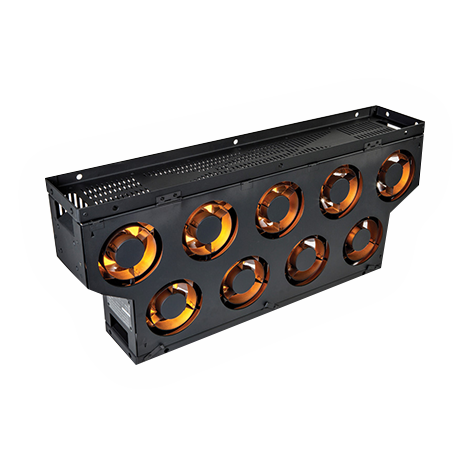
“We wanted to create a total experience – artistic, emotional and spiritual,” said Balich. “Our story about the genesis of a masterpiece has been enhanced into an unforgettable live experience thanks to modern lighting technology from Claypaky and ADB”
Hans-Joachim Schwabe, CEO specialty lighting at Osram added: “We are immensely proud to be part of this modern and innovative show.”
For more information:
http://business.panasonic.co.uk/visual-system/
www.giudiziouniversale.com/en/
www.pro.bose.com
